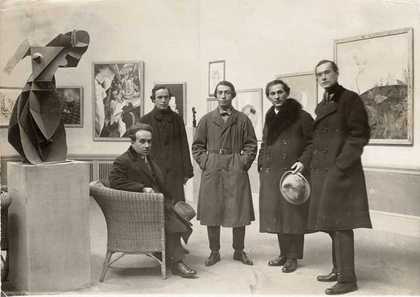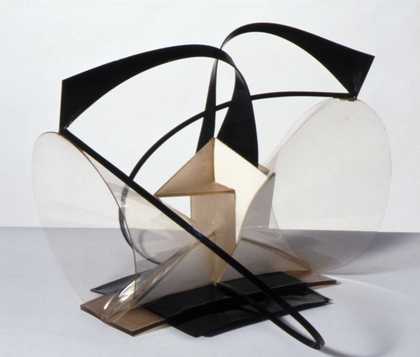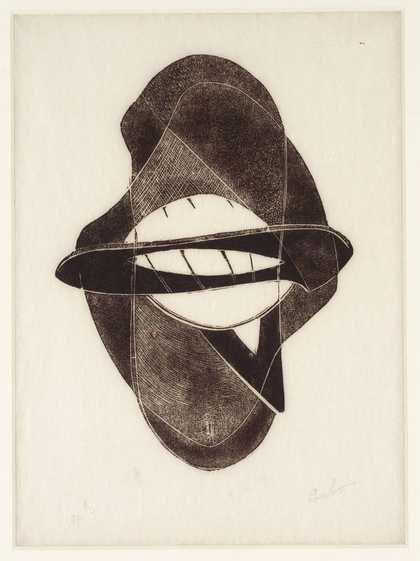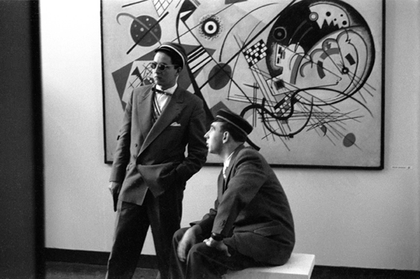Since the replica steering group was formed in September 2006, this is the first time we have invited other experts to join our discussions. Perhaps now, therefore, is the moment to resume our work in terms of its hopes and disappointments.
When we started to discuss the problems of replication we were, more or less, collecting problems. Though a rather depressing thing to do, it turned out to be very interesting and entertaining, confronting us with many different types of decay and damage in modern and contemporary art. As an art historian who had never entered a museum’s restoration studio, I happened to become an historical materialist again. I was personally touched by the problems of Naum Gabo’s sculptures because Tate conservators Jackie Heuman, Derek Pullen, and Stephen Hackney explained them to us in such detail and with such devotion.
Then, of course, we became interested in finding solutions. Is a replica really a solution, and how should it be made and handled? We were rather optimistic and our aim was to establish a charter of general recommendations, perhaps in collaboration with ICOM, given that many museums already work with replicas, sometimes without openly declaring them.
But solutions turned out to be hard to find. Nearly all of them were disputable, and sometimes there were simply none to hand. Without a proper solution, restorers cannot avoid making decisions. Even to do nothing about a self-destroying piece of art is a decision, though probably not a solution. Decisionism is a political option, for which the German philosopher, Carl Schmitt, has become notorious, but not an aesthetical one. After I visited and reported on the Stuttgart conference in February 2007, to avoid us becoming case-collectors, I proposed to discuss case studies orientated towards decision-making.
After three meetings of the steering group and nearing the end of this workshop, I feel that the mode of discussion has changed. More than fostering decisions or solutions we are nourishing scruples. I feel like the member of a conspirative sect, disseminating scruples in a bad world of declared and undeclared replicas. This is a great sect to be in, and I gladly join.
My view may appear a mannerist’s view and, in fact, I am intrigued by the way our problem delivers another variant of the eternal metamorphosis of things. This is confirmed by a sentence that is so frequently used in our discussions that it has already been identified as our mantra: each case is different. So Ovid may be as much our patron as Walter Benjamin, who once declared that ‘a work of art is the death-mask of its conception’. What is a replica, then – a photograph of this death-mask?
I must confess that against my proposition to discuss case studies only as decision-orientated discussions, I have relapsed into our primal stage and feel like a story-collector. But I have not lost interest in solutions. Therefore, I was very impressed by the talk that the philosopher Eberhard Ortland (Vienna) gave in Stuttgart, declaring that any restoration (and replication) has to follow the rules of the game, as fixed by the artist, rather than the texture or authenticity of the materials used. But discussed with regard to Dieter Roth’s planned obsolescence, this formula does not really help: will any salami be able to replace the rotten one? Or is it a violation of Roth’s game to replace it at all? And what if the rules of the game have not been fixed explicitly, but have to be reconstructed? Who decides which interpretation is the correct one? Ortland’s formula sounds sceptical and pragmatic simultaneously; this is how we should be.
Alex Potts has pointed out that it is not only about making a replica but about staging it as well. I support his proposition to display the ruin and the replica together because it is a romantic view. We have to nourish doubts in the viewer and museum-visitor. We knew from the start that responsibility in this field does not only concern the making of replicas but their distribution too. With respect to distribution I feel like a neo-liberal – make one, two, three of them, if you know how! But it did not escape my attention that Derek Pullen frowned when I initially proposed this possibility.
Maybe no laws or commandments will come out of our discussions but only criteria of legitimacy. In his paper Matthew Gale put forward the question of whether there could be museums full of replicas. I have found and can recommend an example in literature, Brian Moore’s The Great Victorian Collection. Read Moore’s book and you can have the same pleasure that I have had in joining this sect!




